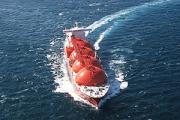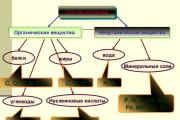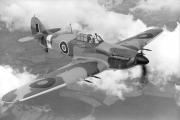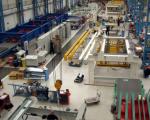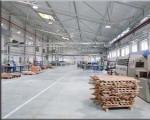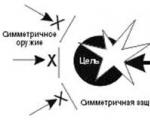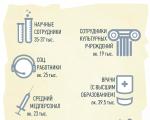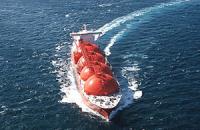20.06.2021
Selecting an external flash. Briefly about the main thing
If you are serious about photography, have you considered purchasing external flash for your camera. An external flash gives the photographer enormous opportunities both for reportage photography and for staged photo shoots. But how to choose the flash that's right for you? In this article, we will talk about the most important characteristics of flashes that you need to pay attention to when purchasing, and also help you choose the flash you need.
When buying any thing, you must first read about its characteristics. And choosing a flash is no exception. Therefore, first of all, let’s find out which characteristics are especially important when choosing a flash. Understanding these things will help you further understand model range and choose the flash that suits you.

Guide number- the main characteristic of the flash, indicating its maximum power.
The guide number indicates the maximum distance in meters from which a correctly exposed image can be obtained at ISO 100 and aperture 1.
Simply put, the higher the guide number, the higher the maximum flash output.
TTL- this is the technology by which the camera measures exposure and sets the flash power to obtain a correctly exposed frame. Sometimes, the flash fires a preliminary burst before the shot to assess the degree of illumination.
Each photographic equipment manufacturer uses its own developments to improve conventional TTL, for example, Nikon uses i-TTL, and Canon uses E-TTL.
Automatic zoom. When shooting with a zoom lens, the photographer often changes the focal length. In order to accommodate changes in focal length, flashes are equipped with automatic zoom. It is a diffuser lens located immediately in front of the flash lamp. By moving, it changes the dispersion of light.
Thus, when using a zoom, the flash can focus the flash in the center of the frame, or provide more fill light. This means that the flash will automatically adapt to the frame you are shooting, be it a group photo or a close-up portrait shot at a long focal length.
Minimum recharge time— indicates the flash recharge time when using new AA batteries. This characteristic is especially important if you plan to shoot reports, where the speed of flash recharging determines whether you will have time to “catch” the frame or not.
Exposure control- This option describes the available shooting modes for the flash, for example - slow sync, red-eye reduction, rear-curtain sync, auto FP high-speed sync, flash power lock and others.
Swivel head allows you to change the direction of the light flux. Simply put, this spec tells you whether you can point the flash head at the ceiling or to the side.
These are the main characteristics of flashes. Also, depending on the model, there are such features as test firing, testing pre-flashes, AF-assist illumination, modeling light and other “tricks”.
Now that we know what flash specs mean, let's try to choose the model that's right for you.
First of all, you need to decide what kind of shooting you need a flash for and based on this, choose the model that suits you.
Essentially, all outbreaks can be divided into three classes:

A separate type of flash is macroflares.

If you are into macro photography—shooting flowers, plants, or insects—this is the flash you need. The essence of a macro flash is that it is attached to the lens itself, thereby its light will go directly to the subject. When using a regular flash, the light comes from above the lens. This means that if you are shooting a small object, the light may simply not reach it or you will get ugly shadows. Macro flash will highlight the shadows on your subject and you can get an interesting photo.
As you can see, the most important thing is to decide what you want to shoot. Whether you just need a flash to photograph friends at parties or for serious reportage shoots, there's a model for every need.
Choosing an external flash for a camera is a problem faced by many owners of DSLRs. In this article we will look at what external flashes are, how they differ from each other, and for what purposes they are used, so that you can make the most informed choice! Amateur photographers also call this device “blitz” or “puff”.
In fact, most devices already have a built-in flash. What makes people “cheat” on it, how can an external flash be more useful than the one built into your camera?
Flash power (guide number)
First of all, almost any external flash is much more powerful (brighter) than the built-in solution. However, external flashes also have different powers, called the “guide number” of the camera flash. To quote Wikipedia, then guide number- this is the maximum distance in meters from the flash to the subject at which a normally exposed image of an average (18% gray) object is obtained at a sensitivity of 100 ISO and an aperture of f/1. All in all this indicator characterizes the maximum energy of a light pulse of a given flash, and for us this is the main thing!
This is the first and most important characteristic flashes. Often, the guide number of a camera flash even appears in its name.
For example : Canon EX 580 II. Her guide number equals 58, and such a flash is considered quite powerful. And at the flash Metz mecablitz 36 AF-5 the guide number is 36 - this flash is considered " average", but also much more powerful - than any built-in one. For comparison, let's say the guide number of the built-in flash is Nikon camera D5100 - equals 12.
The more powerful the flash, the more voluminous rooms you can use it to illuminate, and the more distant objects you can highlight.
But power is not the only characteristic you should pay attention to when choosing and purchasing a flash.
Flash Compatibility
The second most important characteristic is the compatibility of the flash with your camera. Yes, almost everything Canon flashes- compatible with Canon cameras, but if you buy a Metz or Sigma flash, then it’s important not to make a mistake! Some manufacturers of photographic accessories - such as Metz, or Sigma, Acmepower– they produce flashes for cameras from different manufacturers, and they are not compatible with each other, since they have different mounting systems for the camera!
It is recommended to use flashes manufactured by the same manufacturer as the camera itself, this will ensure the clearest, uninterrupted work with the flash. Although, if finances are tight, you can choose third-party manufacturers.
Presence of a rotating head
Some - the cheapest flashes - do not have a rotating head, and therefore you can only shoot head-on with such a flash, which is not always good; such puffs are best used as additional ones (if you shoot with more than one flash).
For everyday use, I recommend choosing a flash with a rotating head, and such that the angle of rotation of the head upward is at least 90 degrees. And so that it also rotates freely on the sides - all 180 degrees. This will help you create various lighting effects.
Manual zoom
A good flash should have the ability to manually zoom. Flash “zooming” is used when - when you use lenses with variable focal length, or several lenses with fixed focus - using the zoom mechanism, the flash adapts to the specific viewing angle of the lens, “focusing” along with the lens. But sometimes this mechanism may not work the way you want - this is why it is advisable to be able to manually adjust the “zoom”.
In the characteristics of a flash, you can often see the maximum and minimum illumination angles, or the focal lengths of lenses - to which the flash can adjust. For example: 28 - 85 mm. The smaller the first number, and the larger the second, the better, the more convenient it will be to work with various lenses.
Wide-angle diffuser (diffuser)
The diffuser - also known as the diffuser - is a very desirable element of the flash. With its help, you can get the most uniform lighting when using a wide-angle lens.
 Wide-angle diffuser of external camera flash
Wide-angle diffuser of external camera flash
Flash power control
Usually there is TTL, E-TTL, and manual. E-TTL and manual flash power adjustment are extremely useful in everyday work.
Synchronization type
It happens “along the front curtain” and “along the rear curtain” of the shutter. It would be better if both options could be configured. Having both options is necessary for some artistic effects.
Ability to act as a master or slave flash
During a photo shoot, sometimes you need to use several flashes at the same time. For example - at . In this case - most external flashes - have a special stand, and almost all flashes can work as additional (slave) flashes - flashing simultaneously with the master flash, but not all (especially not all built-in flashes) can be "master" - and “ignite” other external flares.
Strobe
The strobe function is useful for some photographic effects, but you shouldn’t pay much attention to it.
Camera flash power supply
It is desirable that the flash can be “powered” from AA batteries and rechargeable batteries. Then, if necessary, you can buy them anywhere.
Also pay attention to the number of operations from one set of batteries. The larger it is, the better. Auto shutdown will also help your flash conserve battery power.
Dust and moisture resistant
Not many flashes can boast a dust/waterproof design. Such pleasure costs money...
Camera flash price
The greater the flash power, and the more other functions and bells and whistles, the more expensive the blitz, so before purchasing it is important to decide which functions you will need, so as not to waste money.
Availability of flash accessories
For example, the presence of a bracket for installing a camera on the side of the camera, the presence of an external cable, an additional external power supply... all this must be taken into account - if necessary.
Let's take an example - a set of accessories for the Canon 580EX II flash
 Flash Accessories Canon camera 580 EX II
Flash Accessories Canon camera 580 EX II
- Speedlite 580EX II (On camera/master)
- ST-E2 transmitter for Speedlites. Dedicated transmitter for wireless remote control of slave flash units 580EX II/430EX.
- Compact battery pack CP-E4. Compact and lightweight portable unit external elements nutrition. Provides the same level of dust and moisture protection as the Puff 580EX II. Designed to accept eight alkaline batteries or Ni-MH AA batteries. AA lithium batteries can also be used.
- EX series Speedlite with slave function.
- Remote cable OC-E3. Provides connection to the 580EX II located within 60cm/2ft of the camera. Provides the same level of dust and water resistance as the 580EX II. You can use all the automatic functions of the EOS camera.
- Speedlite Flash Bracket SB-E2
Macro flashes can be classified as a separate category of flashes.
Macro
-flashes differ from regular flashes in their design and purpose. Their power is less than that of conventional external flashes, but more is not required - after all, shooting is done at a very close distance. But choosing a macro flash for a camera is a separate topic...

Checking the external flash
Checking the flash - in general, it does not amount to a lot of work, and there is no special wisdom here.
I recommend that when purchasing, attach the camera to your (necessarily YOURS!) camera, set the settings to automatic, and try to take a photo of the seller or your friend - with a flash aimed directly "at the forehead" - first from a distance of 1 meter, then from distance of 3 meters. If there is no overexposure in either case, then you can safely use the flash!
Explanatory video on the topic of flash photography:
If you have any additional questions dedicated to choosing a flash, please ask them in the comments of this article!
In this article I will consider only the native Nikon Speedlight SB series flashes, which can operate in modern i-TTL mode.
Before purchasing, I advise you to think about whether it is needed at all. To do this, I advise you to read the materials in the article on the topic ‘ ‘. If buying a flash is justified, then Nikon provides the following external flashes:
| Flash |
Weight, g |
Zoom |
Master |
Slave |
Backlight |
V.Ch., m |
Comment |
| SB-300 |
97
|
27mm, no zoom |
No |
No |
No |
18
|
The easiest Nikon flash. Very simple. Uses small AAA batteries, does not support FP. |
|
|
127
|
27mm, no zoom |
No |
No |
No |
21
|
A very simple flash. No FP mode. |
|
|
226
|
24mm, no zoom |
yes (only on older cameras) |
There is |
There is |
24
|
A small flash without a display, but capable of a good set of basic functions. |
|
|
300
|
24-85mm |
No |
There is |
There is |
30
|
Morally outdated amateur flash, good functionality for the money |
|
|
360
|
24-120mm |
There is |
There is |
There is |
28
|
Lightweight functional flash. A very good option. I recommend it. |
|
|
350
|
24-105mm |
There is |
There is |
There is |
38
|
Powerful, but outdated professional flash. |
|
|
425
|
17-200mm |
There is |
There is |
There is |
34
|
Good professional flash.
|
|
|
420
|
17-200mm |
There is |
There is |
There is |
34
|
Flagship model. One of the best
|
| SB-5000 |
420
|
17-200mm |
There is |
There is |
There is |
34.5
|
Flagship model. Best of its kind.
|
| SB-R200 |
120
|
35mm, no zoom |
No |
There is |
No |
10
|
Can only work as a slave flash using , cannot be used on the camera. There is no display to control the flash. This flash is designed for macro photography. |
Zoom— flash head zoom limits, Master- the ability to remotely control other flashes, Slave— ability to work in slave mode, Backlight— possibility of auxiliary illumination for automatic focusing, V.Ch — .
To be as brief as possible, the best external flashes are the flagship professional Nikon Speedlight SB-5000 and . The difference between and is not so great; I described in detail the differences between the 900 and 910 in the review. There are no other native alternatives for professional photography, as it is morally outdated, and they don’t produce it anymore. Flashes, 900, 910, unlike all the others from this article, have.
If you don’t need to shoot for days on end with a flash, then flashes and are very suitable for simpler tasks. It's a pity, but they are no longer producing this flash; this flash is quite light and functional, but it cannot control other flashes using . The flash is quite cheap, but finding one new is very difficult. Unlike, the new one has a wider zoom, easier control via a large display and can work in Master mode.
And SB-300 are the simplest and the cheapest external flashes from Nikon. These flashes are very light, and therefore there will be no problems with them. weight distribution when used on amateur cameras by type, etc. These flashes are ideal for Nikon cameras Coolpix. True, with the SB-300 you won’t be able to experience all the advantages of working with an external flash, such as focus illumination, fast sync or remote control. Attention: Nikon SB-300 flashes and cannot be used in any way with non-chip lenses (lenses, etc.) and some cameras (the exact list is unknown).
Personal experience
I have used almost all Nikon flashes, they all have their own characteristics. Lately I have two flashes in my service: and . It can be a very good option for amateur and simple professional photography. If we abstract too much, then we have to choose from 900\910 and 700.
I believe that for 2017 it is the best option according to the price/quality criterion.
This question often worries a novice photographer who has decided to buy a serious light source and is dissatisfied with the built-in flash. The built-in flash accessories and gadgets on the market are not real help, but just another way to make money. An external flash opens up a whole new world of lighting possibilities for the photographer. Especially if the choice fell on flashes from the camera manufacturer. So which flash should you choose?
Each manufacturer has a whole line of flashes at different prices. Many photographers are intimidated by the prices of professional flashes for no reason. Cheap flashes have limited features and are not as powerful.
First, let's answer the question, why does a photographer need a flash? Here is a bright portrait of a little girl in her mother’s arms:
To get that soft, directional light, the flash needs to be bounced. When reflected, the area of incident light becomes larger and the light appears softer. One ceiling above the photographer’s head is not enough for such purposes. When reflected from the ceiling, you will get a flat light that will not emphasize the shape and volume of the subject. Look at the portrait carefully: the right side of the girl’s face is illuminated more than the left.
It is the interplay of light and shadow in this lighting that makes a portrait interesting. To get this light, I had to calculate its direction and turn the flash so that the light from it reflected from the interior of the room and hit the subject from the side.
So get soft directional light, me you need a flash whose head will rotate both up and in different directions. Therefore, when thinking about how to choose a flash, do not take into account flashes that can only be pointed upward or cannot be turned at all. Any restrictions are a waste of money. It's better to save up more money for a flexible, functional flash.
In addition, a lot of light is lost when the flash is reflected. However, our goal is not to use the light effectively, but to get a soft and directed flow of it, so to get light bright enough to illuminate the subject, you need to choose a powerful flash. Thus, the second condition is high flash power. The more powerful the better.
I actively use TTL technology in my work, so I highly recommend purchasing flash with TTL support and full integration with the camera.
Conclusion: I recommend that every photographer, even those who are buying flash light for the first time, purchase the most powerful and expensive flash from a particular manufacturer. Even if you think the price is too high compared to the camera or lens, the combination of flexibility, flash power and camera integration is the best argument for an expensive product. A simple and non-functional low power flash will only frustrate the buyer with its limited potential. Fully functional flash camera with best characteristics, will simplify the photographer’s life and provide him with creative freedom.
If you have a Nikon, the obvious choice is the Nikon SB-910 Speedlight. It's a full-featured, high-power flash that can be rotated 180 degrees in both directions, giving it the flexibility to bounce light.

If you have Canon camera, best choice for this brand – Canon 580EX II Speedlite flash. This flash can also be rotated 180 degrees in both directions. This feature is only available in expensive models.
If you have a camera from another manufacturer, I recommend the Pentax AF-540 FGZ P-TTL for Pentax owners, the Sony HVL-F58AM for Sony owners, and the Olympus FL-50R for Olympus owners. They are expensive, but do not limit the creativity of the photographer.
Translation: Ekaterina Simachenko
Any person who has dealt with photographic equipment, even in the form of a smartphone camera, knows that the quality of photographs greatly depends on lighting. In low light, photographs are not taken or are of poor quality. At the same time, the brighter the object is illuminated, the greater the scope for choosing settings. Lighting can be natural (for example, the sun) or artificial. Artificial lighting, in turn, can be constant or pulsed. Pulsed lighting is a variety of devices that can be combined general concept"flash". Our article will be about them.
To begin with, let's talk about the advantages and features of photo flashes.
Energy efficiency. The flash, as you can understand, works for a very short period of time. To be precise, this time is even less than the shutter speed of a conventional camera. Therefore, the energy of the power source will not be wasted on creating a stream of light when it is not needed.
Unity of color temperature. All flashes have the same color temperature. That is, if you need to use several flashes at the same time, you can use different ones from different manufacturers.
Wide creative possibilities. Flashes have high brightness, so you can use reflected light or light passed through a diffuser. The brightness of the flashes can be stronger than that of direct sunlight: even in the bright sun you can create the cut-off pattern that you need.
Convenience. Modern flash units are reliable, easy to control and inexpensive. For example, a pair of on-camera flashes is lighter than a set of lenses for an interchangeable lens camera, but provides just as much creative opportunity.
As mentioned, all flashes are quite clearly divided into on-camera and studio flashes. Let's talk about them separately.
On-camera flashes
On-camera flashes, as their name suggests, are mounted on a camera equipped with a so-called “hot shoe”. These mounts, despite their external similarity, have different locations of electrical contacts, so on-camera flashes in most cases are designed for cameras of a certain manufacturer.

Taking a closer look at the mount of any flash, we will see that there are quite a lot of contacts, which makes it clear: they are used to transmit data. This is due to automatic modes camera operation, as described below.
Being portable devices, on-camera flashes have a lightweight design, that is, a plastic body and optics.
When choosing a camera flash, you should pay attention to the following:
Focal length
On-camera flashes, using their own built-in optics, can “adjust” to the equivalent focal length of the lens. Actually, in the flash settings you can specify this focal length in order to use its power as efficiently as possible.

Guide number
This is a conventional value, measured in meters, characterizing the flash power.
The main characteristics of on-camera flashes always indicate the guide number at the maximum zoom of the flash, since it is simply larger. This is worth paying attention to. Therefore, modern flashes with a guide number of 60 at a focal length of 200 mm do not differ in power from previous generation flashes with a guide number of 58 by 120 mm.
Modes
The input for the sync cable is a 3.5 mm jack, less often a 6.3 mm jack (similar to a headphone audio jack). When its contacts close, the flash fires. To do this, cameras may have a so-called PC connector, which is connected to the flash with a sync cable to synchronize the flash with the firing of the camera connector.
For simple studio shooting tasks, so-called flash lamps can be used. They are a flash in a housing designed for the E27 cartridge, they are low in price and easy to use. The disadvantage of such flashes is their low power.

Conclusions
Considering the main characteristics of modern flares, you come to the conclusion that they do not change that much over time. For example, ten years ago the functionality of on-camera and studio flashes was very similar to what it is now. However, with the arrival of Chinese manufacturers, something very important has changed - the price. It has decreased by three to four times, both for on-camera and studio flashes (relative to the cost of cameras and lenses). As a result, shooting with artificial lighting has become accessible; many people buy studio light for personal use. So, if you are thinking about how to realize the creative possibilities of your camera, we advise you to take a closer look at various flash cameras.













